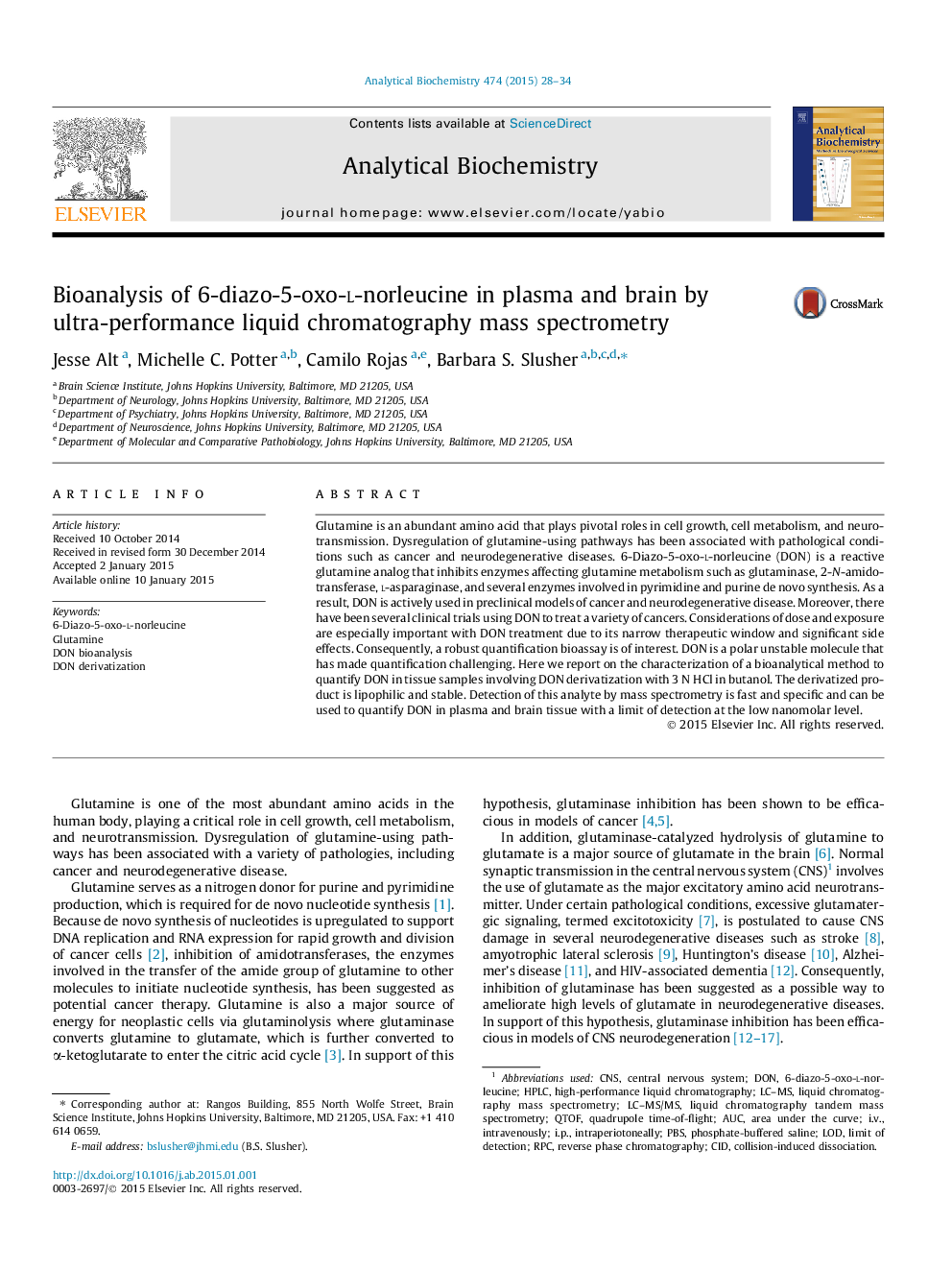| Article ID | Journal | Published Year | Pages | File Type |
|---|---|---|---|---|
| 1173481 | Analytical Biochemistry | 2015 | 7 Pages |
Glutamine is an abundant amino acid that plays pivotal roles in cell growth, cell metabolism, and neurotransmission. Dysregulation of glutamine-using pathways has been associated with pathological conditions such as cancer and neurodegenerative diseases. 6-Diazo-5-oxo-l-norleucine (DON) is a reactive glutamine analog that inhibits enzymes affecting glutamine metabolism such as glutaminase, 2-N-amidotransferase, l-asparaginase, and several enzymes involved in pyrimidine and purine de novo synthesis. As a result, DON is actively used in preclinical models of cancer and neurodegenerative disease. Moreover, there have been several clinical trials using DON to treat a variety of cancers. Considerations of dose and exposure are especially important with DON treatment due to its narrow therapeutic window and significant side effects. Consequently, a robust quantification bioassay is of interest. DON is a polar unstable molecule that has made quantification challenging. Here we report on the characterization of a bioanalytical method to quantify DON in tissue samples involving DON derivatization with 3 N HCl in butanol. The derivatized product is lipophilic and stable. Detection of this analyte by mass spectrometry is fast and specific and can be used to quantify DON in plasma and brain tissue with a limit of detection at the low nanomolar level.
